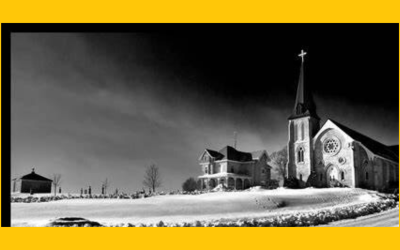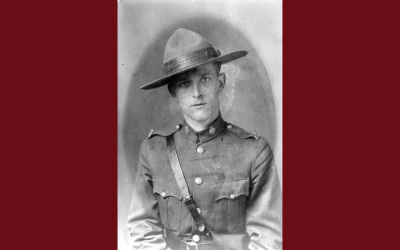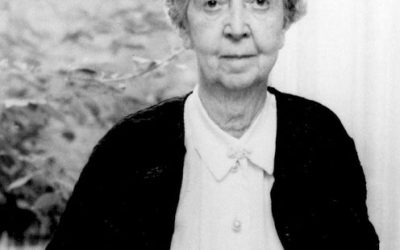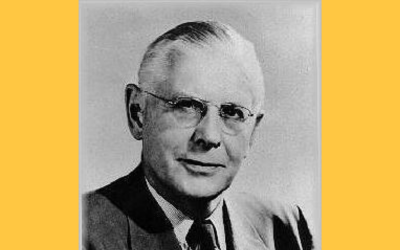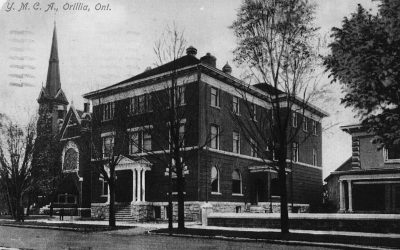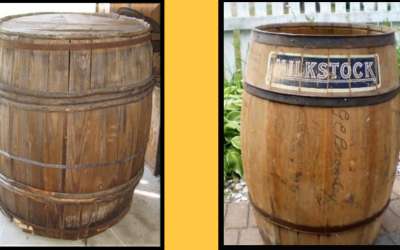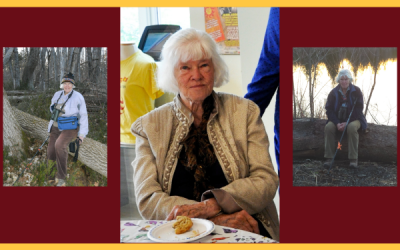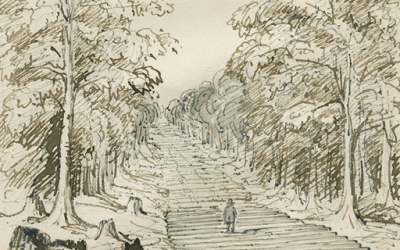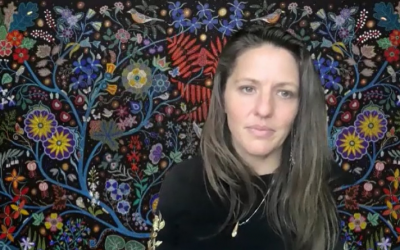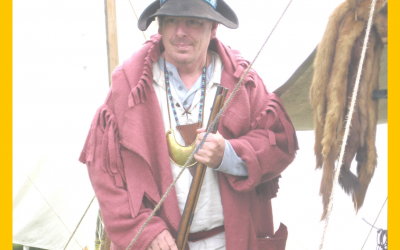How an Orillian Facilitated the American Art Pottery Movement
By Fred Blair
In 1850, at 37 years old, Frederick married Anna Brownrigg in Cincinnati, Ohio. He was employed as a bookkeeper in Michael and Nimrod Tempest’s Hamilton Road Pottery. In 1865, Frederick purchased the company. He employed from 10 to 31 potters in making yellow clay ware, like ceramic fruit jars for the canning industry. His pottery was not always stamped with the company name DALLAS.
About 1869, Frederick switched production to white clay ware to make finer art pottery. At that time, upper class women were purchasing fired pottery to decorate as a hobby. The advertisement in the image here was directed at those ladies.

In 1876, an exhibition was held in Philadelphia to celebrate the Centennial of the United States. Mrs. McLaughlin and Mrs. Nichols of Cincinnati were inspired by the underglaze art pottery produced in England, France, and Japan and they were both determined to learn the technique.
In 1879, Mary Louise McLaughlin formed the Cincinnati Pottery Club. Maria Longworth Nichols was affronted as she did not receive an invitation to join the club. This created some friction between the two ladies. Mrs. Nichols had rented studio space at Coultry Pottery but had a dispute with them and left. Frederick rented her some of his studio space. Later that year the pottery club moved into Frederick’s Pottery as well. However, his kilns were too hot to fire the finely painted glazed pieces. Mrs. Nichols purchased a kiln to fire over glazes and Mrs. McLaughlin purchased one to fire under glazes. There was artistic rivalry between the two ladies but they shared their special kilns with each other. Both ladies had held the record for the largest vase crafted in the US at about that time.
Amanda Merriam’s plaque in the accompanying image was fired in all three types of kilns in the Dallas Pottery in 1882. Mrs. Nichols’ “Dragon Vase”, circa 1879-1880, was fired there as well.


There were over 200 amateur potters in the city and Frederick saw an increasing demand for art pottery in the US. He expanded the size of his pottery production while also investing in clay deposits in several states. The number of potters in his employ increased to over 90 with a similar increase in other staff. His pottery became the largest business in the city. The number of other fine art potteries in the country increased as well and the market for art pottery became saturated in the early 1880s.
On June 9, 1881, Frederick died and his pottery went out of business the following year. Due to the decreased demand for their wares two other large potteries in the city went out of business too. Mrs. Nichols however was undaunted. In 1880, she used family money to purchase a factory and established Rookwood Pottery, which is still in business. If you watch the American Antiques Roadshow, you will have seen some examples of their pottery. Images of these Cincinnati lady’s work can also be found online.
MORE ARTICLES:
Is St. Columbkille’s Church in Uptergrove haunted?
Trish Crowe-Grande It is that time of year when the leaves change colour, pumpkins and fall mums appear on porches and there is a crisp coolness in the air. If you have taken any walks in your local neighbourhood or drives around town, you may have noticed...
The Man Behind the Badge – an OPP Officer with ties to Orillia
By Chris Johnstone OPP Museum Curator Robert George Beatty was born on July 18, 1904. At the age of 23, he decided to embark on a career in policing after his work as a Provincial Officer under the Ontario Temperance Act came to an end. He joined the OPP as a regular...
Orillia Hall of Fame Inductee author Marian Keith – Mary Esther (Miller) MacGregor (1874-1961)
Marian Keith was the pen name for Mrs. Esther MacGregor nee Miller. She was born in 1874 In the village of Rugby, Oro Township (now Oro-Medonte), to parents who instilled in her the value of education, a keen interest in learning, a love of good literature and a...
Leslie Frost: Orillia’s First Premier
Premier of Ontario 1949-1961 By John Merritt, Simcoe County Historical Association September 20, 2020 marked the 125th anniversary of the birth of Orillia native and former Ontario premier Leslie Frost. Frost was born in Orillia on September 20, 1895 to William...
What We Have Lost
What We Have Lost By David TownAs we approach the one-year anniversary of the YMCA closing in Orillia, I think it is insightful to see what the Y did for Orillia from a historical perspective. You never know what you’ve lost ‘til it’s gone. The Y in Orillia, as...
Sound as a Barrel
by Ellen Blaubergs, Volunteer, Coldwater Canadiana Heritage Museum There are numerous interesting “works in progress” involving artifacts at the Coldwater Canadiana Heritage Museum, including two wooden barrels once used to transport ceramics. Both are in...
Happy Birthday to Dr. Nancy Ironside!
Happy Birthday to Dr. Nancy Ironside! In honour of her birthday on July 24, we pay tribute to Nancy Retired physician and anesthesiologist, environmentalist, naturalist and... To many, Dr. Nancy Ironside needs no introduction. Without fanfare, Nancy has made a huge...
Two Horse Rides from Orillia to Coldwater
Corduroy Road Over a Swamp in Orillia Township, Ontario Ware, Titus Hibbert, 1810-1890 Picture, 1844, English Pen & brown & blue inks, grey wash, over pencil. Toronto Public Library Digital Archive, in the Public DomainBy Fred Blair Jacob Gill and his...
Community Difference-Maker: Erin Dixon and the Gojijing Roundtable
Community Difference-Maker: Erin Dixon and the Gojijing Roundtable Three thousand years ago, Orillia was populated by the Wendat or Huron people, whose settlement extended all around Lake Couchiching, which they called Gojijing. As colonizers arrived, the lives of...
Andrew Borland, War of 1812 Veteran
By Fred Blair On June 18, 1812, the United States declared war on the British. Many recent American settlers in Upper Canada, like the Borlands, had to consider where their loyalties lay. By law, all the males between 16 and 60 in the province were required to serve...

